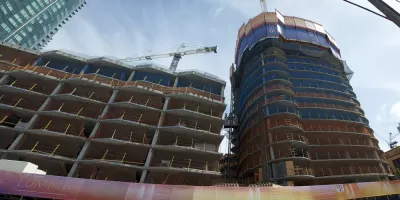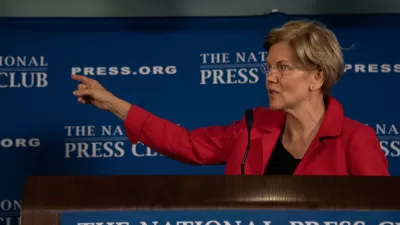The public and the "urbanism cognoscenti" do not see eye to eye when it comes to housing policy. A new survey makes the disconnect in opinions on matters of supply, regulations, and affordable housing very clear.

Liam Dillon shares the results of a survey conducted by USC Dornsife and the Los Angeles Times that reveals how complicated public opinion can get on matters of housing policy.
In fact, public opinion does not at all correspond to the consensus academic researchers, state analysts and California’s gubernatorial candidates, according to Dillon's explanation of the survey's findings:
A USC Dornsife/Los Angeles Times survey found that just 13% of eligible California voters believe that too little home building is a primary contributor to the state’s affordability issues. The answer ranked sixth among eight options offered in the poll, when first and second responses were combined. (Poll results reflect the percentage of people who chose a particular reason as their first or second option.) Lack of rent control topped the list with 28%.
Following lack of rent control was lack of funding for affordable housing. While political candidates, social media-savvy urbanists, and a growing YIMBY movement, among others, blame restrictive zoning for high housing costs, very little of the public agrees: only 9 percent of respondents pointed to finger at zoning regulations as the culprit in the state's housing crisis. The public also exhibited a strong preference for maintaining local control over allowing the state greater powers to preempt local regulations.
The article includes a lot more detail about the survey results and how they reflect on the big planning, land use, and housing policy actions and failures of recent years.
FULL STORY: Experts say California needs to build a lot more housing. But the public disagrees

Maui's Vacation Rental Debate Turns Ugly
Verbal attacks, misinformation campaigns and fistfights plague a high-stakes debate to convert thousands of vacation rentals into long-term housing.

Planetizen Federal Action Tracker
A weekly monitor of how Trump’s orders and actions are impacting planners and planning in America.

San Francisco Suspends Traffic Calming Amidst Record Deaths
Citing “a challenging fiscal landscape,” the city will cease the program on the heels of 42 traffic deaths, including 24 pedestrians.

Defunct Pittsburgh Power Plant to Become Residential Tower
A decommissioned steam heat plant will be redeveloped into almost 100 affordable housing units.

Trump Prompts Restructuring of Transportation Research Board in “Unprecedented Overreach”
The TRB has eliminated more than half of its committees including those focused on climate, equity, and cities.

Amtrak Rolls Out New Orleans to Alabama “Mardi Gras” Train
The new service will operate morning and evening departures between Mobile and New Orleans.
Urban Design for Planners 1: Software Tools
This six-course series explores essential urban design concepts using open source software and equips planners with the tools they need to participate fully in the urban design process.
Planning for Universal Design
Learn the tools for implementing Universal Design in planning regulations.
Heyer Gruel & Associates PA
JM Goldson LLC
Custer County Colorado
City of Camden Redevelopment Agency
City of Astoria
Transportation Research & Education Center (TREC) at Portland State University
Jefferson Parish Government
Camden Redevelopment Agency
City of Claremont





























